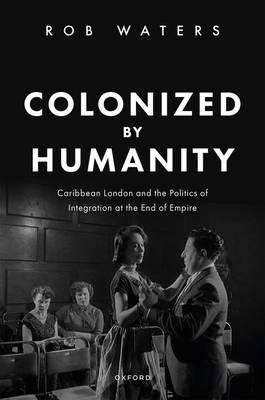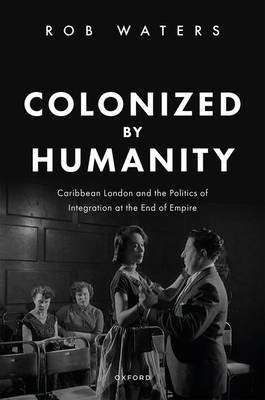
- Afhalen na 1 uur in een winkel met voorraad
- Gratis thuislevering in België vanaf € 30
- Ruim aanbod met 7 miljoen producten
- Afhalen na 1 uur in een winkel met voorraad
- Gratis thuislevering in België vanaf € 30
- Ruim aanbod met 7 miljoen producten
Zoeken
Colonized by Humanity
Caribbean London and the Politics of Integration at the End of Empire
Rob Waters
Hardcover | Engels
€ 72,95
+ 145 punten
Omschrijving
'Colonization through a process of affection', wrote the London-based Barbadian novelist George Lamming in 1960, was 'the worst form of colonization'. Lamming's London was marked by the violent currents of racism--some seen, many disavowed. But the operations of race, the putting-in-place of its hierarchies, the destructions of the self that its logics entailed, exceeded only expressions of violence and hatred. It was in 'affection', too, that colonialism's racial visions operated. It was not only among the illiberals, but among the liberals, that colonization continued its hold on metropolitan culture. This was colonization, as Lamming would also put it, by humanity. Colonized by Humanity is a study of racial liberalism at the end of empire. It uncovers the projects to cultivate racial integration developed in the two decades between the arrival of the Empire Windrush and the passage of the first Race Relations Act. These were the years that integrationism took hold as a social phenomenon, its reflexes lodged deep in an English culture that took the idea of 'tolerance' as its watchword. It was a culture that re-inscribed race even as it aimed at overcoming its discriminations. Caribbean London is at the heart of this story. It was in the capital that integration projects multiplied fastest, and it was the multicultural capital that provided integrationism's imaginative geographies. Viewing integrationism through the eyes of Caribbean Londoners, Colonized by Humanity allows us to see it as they did, with its colonial and racial dynamics up close.
Specificaties
Betrokkenen
- Auteur(s):
- Uitgeverij:
Inhoud
- Aantal bladzijden:
- 320
- Taal:
- Engels
Eigenschappen
- Productcode (EAN):
- 9780198879831
- Verschijningsdatum:
- 5/01/2024
- Uitvoering:
- Hardcover
- Formaat:
- Genaaid
- Afmetingen:
- 161 mm x 239 mm
- Gewicht:
- 662 g

Alleen bij Standaard Boekhandel
+ 145 punten op je klantenkaart van Standaard Boekhandel
Beoordelingen
We publiceren alleen reviews die voldoen aan de voorwaarden voor reviews. Bekijk onze voorwaarden voor reviews.











